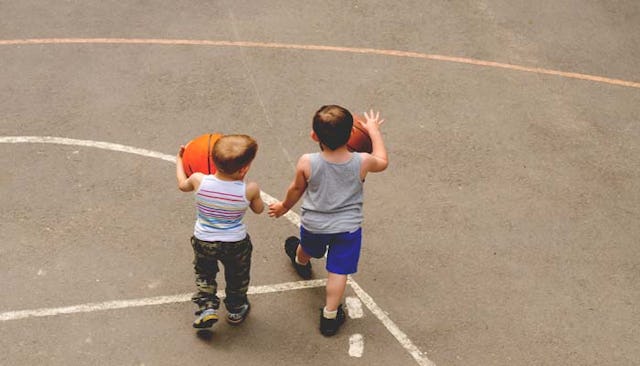Our Children Are Safer Than They've Ever Been, But We Refuse To Believe It

I grew up in the 70’s and 80’s. My mother was a waitress who worked nights and left for her shift before I got home from school. I was a latch-key kid from about second grade on: I would let myself in the door and make myself a sandwich while I waited for my junior-high-aged sister to come home. There was nothing odd or concerning about this, or about the fact that I walked home from school with friends who were all my age. It’s just what we did back then.
Our summers were spent running around our condominium common areas all day. The only time we were supervised by adults was when we were using the pool. There is an anecdote that “back in the day” more mothers were home and would keep a collective eye on all of the neighborhood children. If that were true of those mothers in our apartment complex, they sure did a good job of hiding themselves. I really don’t think anyone had an eye on us. We knew our boundaries — that we couldn’t leave the condo complex, when we heard our parents call us we had to come running, and we couldn’t come home bleeding. We always managed to adhere to those rules.
The way our moms and dads raised us back then was simply called “parenting.” Now, there’s a term for the style of parenting that follows the idea that children need to test boundaries and be given independence to grow — “Free Range Parenting.”
We’re hearing about this brand of parenting a lot this week, thanks to the trials of one “free range” family dealing with repeated attempts by CPS and concerned neighbors to label them as “negligent” for simply not hovering around their young children all day. Their latest run-in with authorities involved their six and ten-year-old children being picked up from a park at 5 p.m. because a concerned onlooker saw them playing alone. The parents weren’t notified for three hours that their children were being held.
The response to the story has been overwhelmingly supportive of the parents’ decision to allow their children the independence to play alone and walk home together. Comment after comment on the articles covering the family express support for the parents and their decisions.
So why are there not more kids playing outside alone?
I agree in theory that these parents are doing nothing wrong. But would I allow my own children to venture out alone at that age? I wish I could say yes, but I honestly don’t know. As much as I hate the effects of the 24-hour-news cycle, I am completely a victim of it.
The Washington Post analyzed all the ways that children are safer now than they have ever been before. Child mortality rates have dropped as have the rates of child homicide: “for a kid between the ages of 5 and 14 today, the chances of premature death by any means are roughly 1 in 10,000, or 0.01 percent.” Reports of missing children are down 40% since 1997, and the population has risen by over 30% in that same time, “meaning that the actual rate of missing person reports for children has fallen faster than 40 percent.”
But the most striking statistic is that of the proverbial “boogeyman” that we are all afraid of: “only 0.1 percent of missing persons cases were what we’d think of as a ‘stereotypical kidnapping’ — where a complete stranger tries to abduct somebody and carry them off by force.”
So why are we afraid? Why would an onlooker see a set of children playing together in a park while the sun was still up and feel like they were in imminent danger?
We’re here. We’re at the place where many of us have decided there is DANGER everywhere, without actually even believing it. So how do we turn it around? How do we begin to parent in a sane way again and let our children get the independence they deserve?
The bottom line: if it was safe enough for us to play outside alone as kids (and I’m pretty sure we all agree it was) it’s even safer for our children today.
How do we really start believing that?
Related post: Our Parents Had It Way Easier Than We Do
This article was originally published on